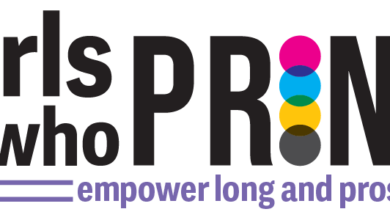
The term ‘multi-purpose’ sounds great. One product for different applications, helping your business keep costs low and stock keeping units (SKU) simple—what’s not to like?
In reality, that smart multi-functional product is better for some jobs than others in terms of appearance, performance, cost efficiency, and longevity. It could work well for one application but perform poorly for others.
This is especially important when choosing graphics media. The type of product, and particularly its adhesive element, should be dictated by the application’s environment and required longevity. A multi-use product might perform well for a few weeks but may cause problems if left in place for months, after which the adhesive will fail.
In the case of floor graphics, curling edges would pose a safety risk aside from looking unsightly. Conversely, the product may be designed for long-term or permanent use when the application is short-term. If so, you will spend more time and money removing it than you expected.
Naturally, the cost to your business, in money and time, is a big factor. Nobody likes paying more or taking longer to get results. It’s therefore understandable to look at the price and ease of use of graphics media developed for indoor applications and hope it will work just as well for outdoor graphics, for example. However, in this case, the indoor product will lack the weatherproof adhesives engineered explicitly for exterior use, meaning it may simply fail. A specialist outdoor product would cost more but will offer peace of mind that results will last. Again, the reverse can be true: one product could be priced correctly for floors (and the specialist adhesive this application requires) but overpriced for walls where this adhesive would be too aggressive.
Indeed, even for indoor applications, the product must be compatible with the intended surface. In addition to remaining safely in place, it should remove cleanly and easily at the end of the project. Products designed for high-tack applications such as brick can also work on windows but be aware: apply it to drywall or plasterboard, and it may never come off without pulling the wall surface away with it.
Alongside its suitability to do a job, consider the aesthetics of the product. There is a fantastic variety of textures and finishes available for graphics. Why restrict yourself to a matte finish when you could choose glossy, or even sand, linen, canvas, or woodgrain effect?
If you’re still leaning toward a product marketed as multi-purpose, consider a loaf of sliced bread. Perfect for toast in the morning, but how about as a hot dog bun? You could use it, but why would you want to? It completely changes the experience. That sliced loaf might be ideal for the kids’ packed lunches, but would you serve it at a dinner party? What if you or your guests have a gluten intolerance, or you want to have something more special with your soup?
One product might seem to tick all the boxes, but it needs more thought. For a graphics application, just like in a bakery, the best thing since sliced bread might be a lot more sophisticated.



